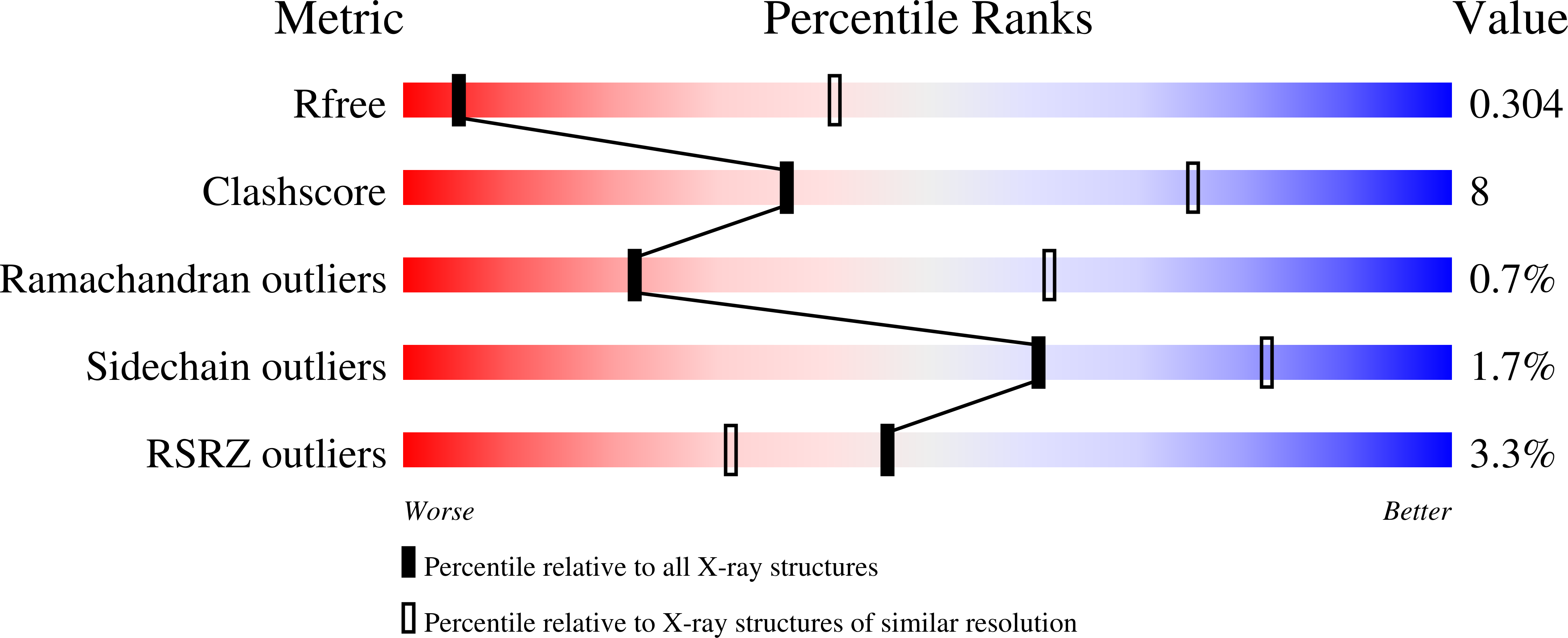Swiveling domain mechanism in pyruvate phosphate dikinase.
Lim, K., Read, R.J., Chen, C.C., Tempczyk, A., Wei, M., Ye, D., Wu, C., Dunaway-Mariano, D., Herzberg, O.(2007) Biochemistry 46: 14845-14853
- PubMed: 18052212
- DOI: https://doi.org/10.1021/bi701848w
- Primary Citation of Related Structures:
2R82 - PubMed Abstract:
Pyruvate phosphate dikinase (PPDK) catalyzes the reversible conversion of phosphoenolpyruvate (PEP), AMP, and Pi to pyruvate and ATP. The enzyme contains two remotely located reaction centers: the nucleotide partial reaction takes place at the N-terminal domain, and the PEP/pyruvate partial reaction takes place at the C-terminal domain. A central domain, tethered to the N- and C-terminal domains by two closely associated linkers, contains a phosphorylatable histidine residue (His455). The molecular architecture suggests a swiveling domain mechanism that shuttles a phosphoryl group between the two reaction centers. In an early structure of PPDK from Clostridium symbiosum, the His445-containing domain (His domain) was positioned close to the nucleotide binding domain and did not contact the PEP/pyruvate-binding domain. Here, we present the crystal structure of a second conformational state of C. symbiosum PPDK with the His domain adjacent to the PEP-binding domain. The structure was obtained by producing a three-residue mutant protein (R219E/E271R/S262D) that introduces repulsion between the His and nucleotide-binding domains but preserves viable interactions with the PEP/pyruvate-binding domain. Accordingly, the mutant enzyme is competent in catalyzing the PEP/pyruvate half-reaction but the overall activity is abolished. The new structure confirms the swivel motion of the His domain. In addition, upon detachment from the His domain, the two nucleotide-binding subdomains undergo a hinge motion that opens the active-site cleft. A similar hinge motion is expected to accompany nucleotide binding (cleft closure) and release (cleft opening). A model of the coupled swivel and cleft opening motions was generated by interpolation between two end conformations, each with His455 positioned for phosphoryl group transfer from/to one of the substrates. The trajectory of the His domain avoids major clashes with the partner domains while preserving the association of the two linker segments.
Organizational Affiliation:
Center for Advanced Research in Biotechnology, University of Maryland Biotechnology Institute, Rockville, Maryland 20850, USA.















